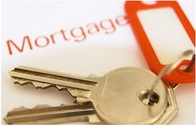Advertisement
Mortgage App Fraud Declines 5.6 Percent Year-Over-Year in Q2

CoreLogic has released its Mortgage Fraud Report showing that fraud risk among U.S. mortgage applications declined 5.6 percent year over year in the second quarter of 2013. According to the report, fraudulent residential mortgage loan applications totaled an estimated $5.3 billion nationally in the second quarter of 2013, down from $5.5 billion in the second quarter of 2012, but up slightly from $5.2 billion in the first quarter of 2013. Fraudulent loan applications reached a combined value of approximately $10.5 billion for the first half of 2013.
The analysis indicates that during the second quarter of 2013 approximately 19,700, or 0.8 percent, of mortgage applications were identified as having a high risk of fraud, down from 20,900, or 0.7 percent, in the second quarter of 2012. Quarter over quarter, fraudulent application volume remained relatively flat.
The CoreLogic Mortgage Fraud Report examines the collective level of fraud risk among mortgage applications at the national, state and Core Based Statistical Area (CBSA) levels. Developed using the company’s proprietary mortgage fraud data and predictive scoring technology, the report measures overall fraud activity based on the CoreLogic Mortgage Application Fraud Risk Index, as well as within six specific indexes: income, occupancy, employment, identity, property and undisclosed debt.
Among these six indexes, intentional misrepresentation of income on a mortgage application showed the greatest year-over-year increase in the second quarter of 2013 at 13.3 percent. Quarter over quarter, income application fraud risk increased 7.5 percent. Property fraud risk, or deliberate over- or under-valuing of a home to achieve illegitimate gains, showed the greatest decrease at 20.8 percent in the second quarter of 2013 compared to a year ago. On a quarter-over-quarter basis, property fraud risk decreased 7.1 percent.
“Since the beginning of 2012, mortgage application fraud risk has totaled more than $30 billion nationally,” said Dr. Mark Fleming, chief economist for CoreLogic. “While the propensity toward application fraud risk has declined based on our index, as the housing market recovers, the volume of mortgage applications is rising and increasing the total amount of fraudulent mortgage loan application dollars.”
Highlights as of Q2 2013:
►The total dollars of fraudulent mortgage loan applications increased in 27 states compared to a quarter ago.
►Ohio had the highest year-over-year growth in mortgage application fraud risk at 30.1 percent, followed by Hawaii (19.6 percent), Kentucky (16.6 percent), Connecticut (15.0 percent) and Alaska (13.8 percent).
►The five states with the highest estimated value of fraudulent mortgage applications were California ($864 million), New York ($278 million), Florida ($273 million), Texas ($261 million) and Virginia ($231 million).
►Of the 75 CBSAs analyzed, Allentown-Bethlehem-Easton, Pa. had the highest year-over-year increase in mortgage application fraud risk at 33.6 percent, followed by Honolulu, Hawaii (27.4 percent), Greenville-Mauldin-Easley, S.C. (26.8 percent), Rochester, N.Y. (22.9 percent) and Bridgeport-Stamford-Norwalk, Conn. (22.5 percent).
►The five CBSAs with the highest estimated value of fraudulent mortgage applications were New York, N.Y. ($339 million), Los Angeles, Calif.($337 million), Washington, D.C. ($226 milllion), Chicago, Ill. ($159 million) and San Francisco, Calif. ($156 million).
About the author





